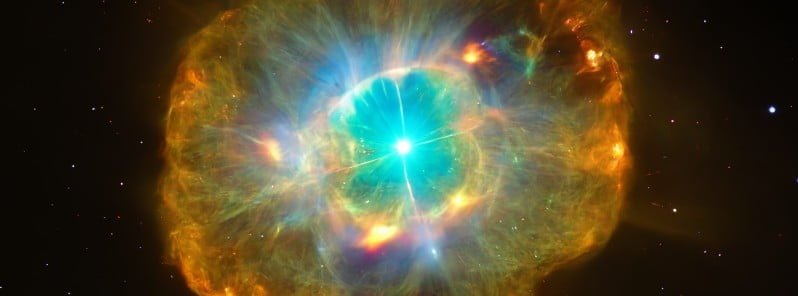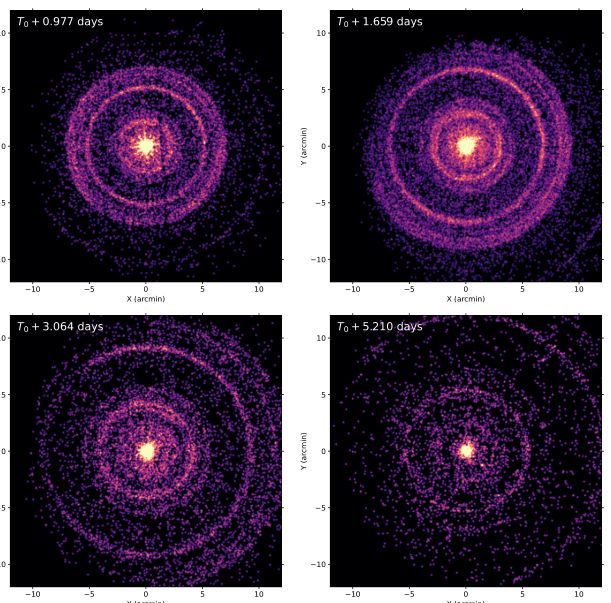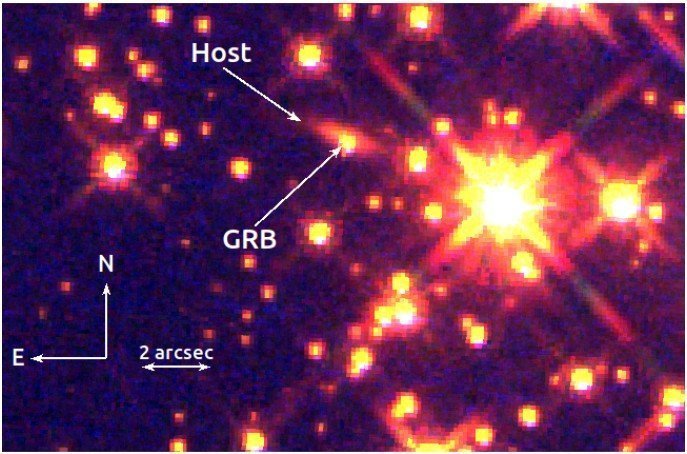The most powerful gamma-ray burst on record

A record-breaking gamma-ray burst known as GRB 221009A was detected in October 2022, and now, a trio of papers has been submitted to The Astrophysical Journal Letters, revealing new insights about this rare and unique event. With up to 18 teraelectronvolts of energy packed in its emissions of light, GRB 221009A is considered the most powerful gamma-ray burst on record, and its afterglow has been challenging our current theoretical models of gamma-ray bursts.
A record-breaking gamma-ray burst named GRB 221009A was detected on October 9, 2022, and has now been described as a one-in-a-thousand-year event. This particular burst of electromagnetic radiation was caused by a cataclysmic event, possibly a supernova or hypernova explosion of a massive star or a collision of binary systems involving at least one neutron star.
Researchers have been eagerly analyzing this incredible explosion and have submitted three papers to The Astrophysical Journal Letters. According to the papers, this gamma-ray burst is breaking the rules and is considered a rare and unique event.
The first paper, led by Maia Williams of Pennsylvania State University, reports that GRB 221009A was located relatively nearby and had sustained observations of the afterglow. The X-ray afterglow of this gamma-ray burst was more than an order of magnitude brighter than any previous GRB observed by Swift, and its large X-ray luminosity and low Galactic latitude make it a powerful probe of dust in the Milky Way.

The second paper, led by Tanmoy Laskar from the University of Utah, presents multi-wavelength observations of GRB 221009A and finds that the data can be partially explained by a forward shock from a highly-collimated relativistic jet interacting with a low-density wind-like medium. They find that the temporal evolution of this component does not follow standard assumptions of afterglow theory, suggesting that something is fundamentally wrong with synchrotron afterglow theory.
The third paper, led by astronomer Manisha Shrestha from the University of Arizona, presents photometric and spectroscopic observations of GRB 221009A and searches for an associated supernova. They do not detect any clear sign of supernova spectral features and suggest that the energy from the explosion is mostly concentrated in the jet, leaving a lower energy budget available for the supernova.

Researchers estimate that GRBs as energetic and nearby as GRB 221009A occur at a rate of less than 1 per 1 000 years, making this a truly remarkable opportunity unlikely to be repeated in our lifetime.
The afterglow of this peculiar explosion is expected to still be visible to our telescopes in multiple wavelengths, and astronomers are working hard to uncover the mysteries of this unique event.
The papers are available on the preprint server arXiv for those interested in delving deeper into the research findings.
References:
1 GRB 221009A: Discovery of an Exceptionally Rare Nearby and Energetic Gamma-Ray Burst – Williams et al. – https://doi.org/10.48550/arXiv.2302.03642
2 The Radio to GeV Afterglow of GRB 221009A – Laskar et al. – https://doi.org/10.48550/arXiv.2302.04388
3 Lack of Bright Supernova Emission in the Brightest Gamma-ray Burst, GRB~221009A – Shrestha – https://doi.org/10.48550/arXiv.2302.03829
Featured image: Gamma-ray burst – artist’s impression. Credit: The Watchers

Commenting rules and guidelines
We value the thoughts and opinions of our readers and welcome healthy discussions on our website. In order to maintain a respectful and positive community, we ask that all commenters follow these rules.